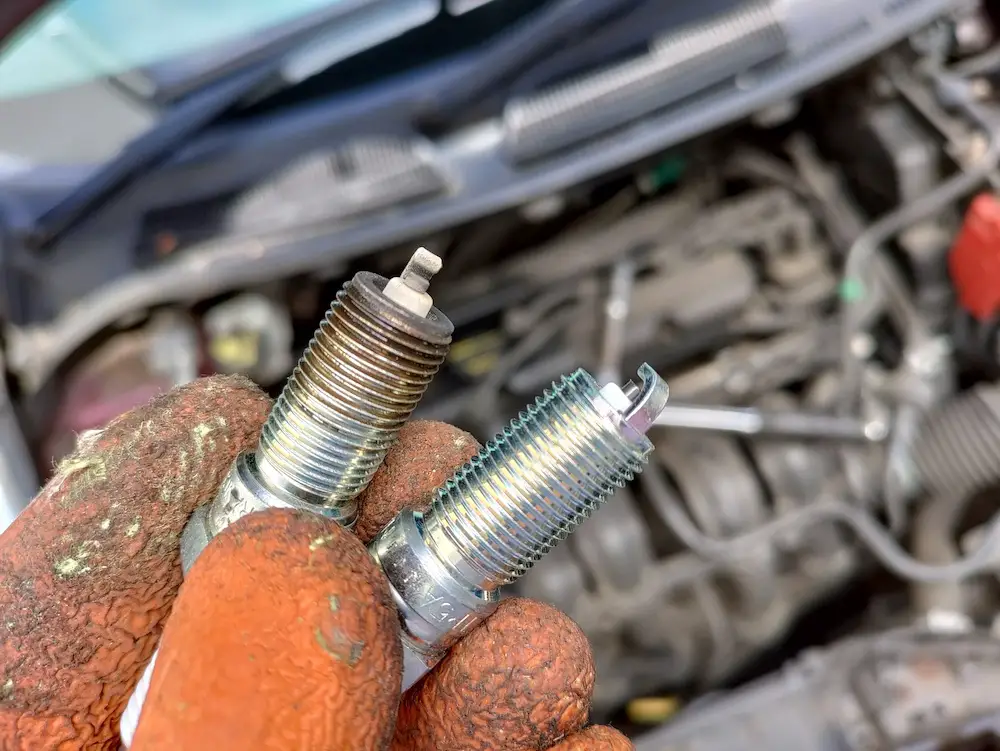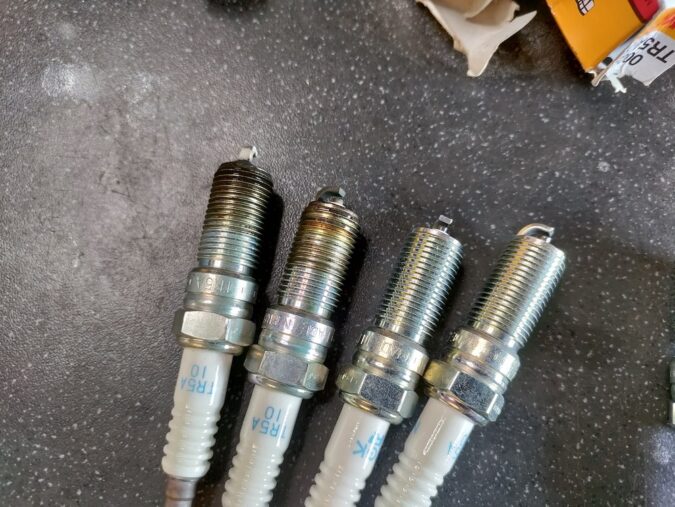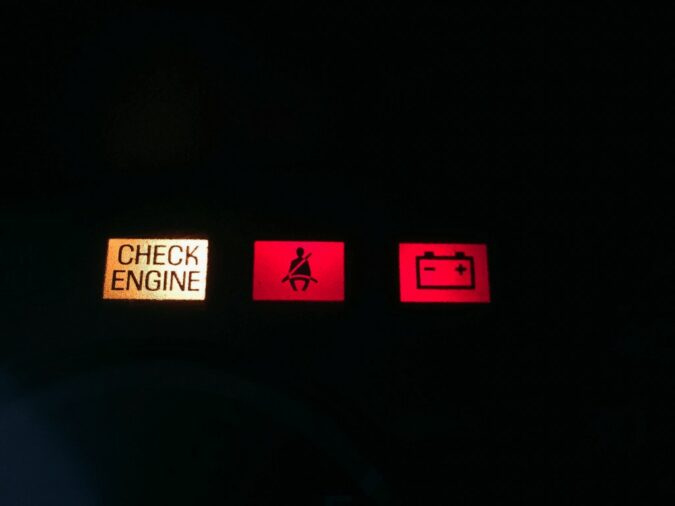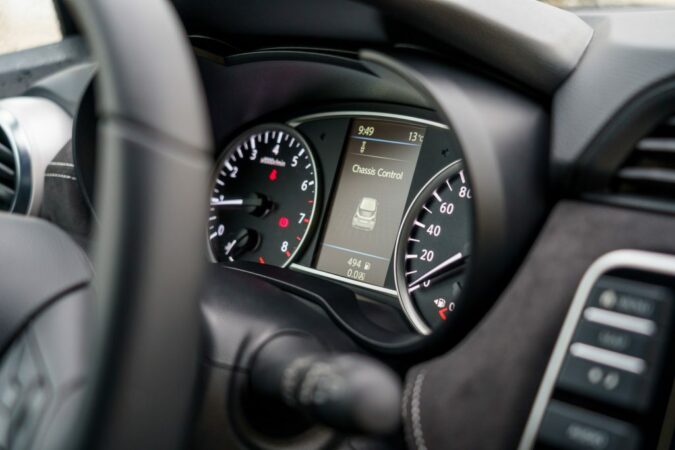Have you started noticing some weird starting issues with your car and you want to learn how to check spark plugs? If that is the case, then you are at the right place because there will be a lot to cover on this topic.
- Spark Plugs?
- Symptoms
- Why They Fail
- How To Check?
- Ways To Read Them?
- How To Diagnose?
- Conclusion
- F.A.Q
Having a problem like this with the spark plugs is not that present now the way it was present in the past since modern engines keep spark plugs in fairly good condition. But still, there could be spark plug damage and after a ton of miles, the spark plugs will start deteriorating and will make you unable to start your car in the worst case.
This is why learning how to check spark plugs is really important for you to know if you want to make sure that your spark plugs perform as they should all of the time. And frankly, a spark plug can tell a lot of stories. All you need to do is to learn to read them. And in this article, we are going to help you to learn precisely that.
First, we are going to learn what are spark plugs and why they are so important. Then we will discuss the bad spark plug symptoms and learn more about what will happen when they fail. After that, we will learn how to check spark plugs. We will learn how to remove them and read them. And determine if they are bad or not. So, if you want to learn more, follow along.
What Are Spark Plugs?
Now before we dive into more complex topics such as the bad spark plug symptoms and how to check spark plugs, let’s first cover some of the basics and learn what are spark plugs in general. I bet that there are a lot of people out there who are not into cars and want to learn some of the basic stuff when it comes to these components. So, what are spark plugs?
Well, a spark plug is also simply known as a plug. This component is basically an electrode that is mounted on top of your cylinder.
As you probably know, there is a spark plug on each cylinder. Some engines even have two spark plugs on a single cylinder. Also, known as a twin-spark system. You will likely see this system in Alfa Romeo vehicles as well as modern gen 3 HEMI engines from Chrysler.
Nevertheless, spark plugs are one of the components that since their introduction in cars haven’t changed a lot. This design was patented back in 1860, so you can imagine that these components are more than 160 years old. They were invented by a French scientist named Etienne Lenoir and even Nikola Tesla had some patents concerning these components.
These spark plugs are really simple components that consist of a few parts. Namely, the terminal. The terminal is the component that is connected to the ignition system.
Then there is the insulator which is the white part made of extremely hard ceramic and on this component, there are special ribs to improve the electrical insulation. Then there is the insulator tip, seals, and metal casing and the central part is the electrode that transfers the power. But how to check spark plugs? More on that in a bit.
Why Spark Plugs Are So Important?
Now before we dive into the bad spark plug symptoms and how to check spark plugs let’s learn more about how these spark plugs work and why they are so important. Knowing how they work will help you understand their purpose.
Nevertheless, spark plugs as we mentioned are electrodes. On each of the cylinders, there is only one of them at least. As we mentioned some engines have even two of them. But what is the purpose of these spark plugs?
The spark plugs have a really simple role, they are basically transferring the spark to the cylinder and igniting the air to fuel mixture.
In older cars, the spark plugs are connected with wires to the distributor. But on more modern vehicles, the spark plugs are connected to the ignition coils which are mounted right on top of the spark plug. The ignition coils are electrical transformers that are sending a high current to the spark plugs and ignite the fuel.
Having properly working coils and spark plugs is essential for your car to perform as it should all of the time. If one of these spark plugs is not working as it should, you will face a ton of bad spark plug symptoms that we are going to cover next.
Also, another very important aspect is reading spark plugs. You just need to learn how to read spark plugs if you want to troubleshoot problems and diagnose them the right way. But we are going to cover that later on when we will learn how to check spark plugs. Now, let’s first go through the symptoms real quick.
Bad Spark Plug Symptoms
Now before we jump into the reasons why spark plugs fail and how to check spark plugs. Let’s learn more about the spark plug symptoms.
Knowing the symptoms will help you determine when you want to check the spark plugs on your vehicle. And that is a key area that you need to understand before we learn why spark plugs fail and reading spark plugs. So, let’s begin.
1. Check Engine Light
The first symptom that we are going to cover before we learn how to check spark plugs is the check engine light. So, why is this the case? What the check engine light has to do with bad spark plugs?
Well, it has a lot to do with. Namely, because whenever there are bad spark plugs, there will be misfires in the engine. Whenever there are misfires, the computer also known as the PCM will notice and report them to you.
It could send you a P0300 code that indicates a random misfire that happens in the engine. Or it will send you a more specific code such as the P0303 which indicates a misfire on cylinder number 3. Or P0304 which indicates a misfire on cylinder number 4. You get the point.
This is why having an OBD2 scanner tool is really good because you will be able to diagnose the check engine light quickly and effectively. But sometimes the check engine light will not turn on and you will have to rely on some other symptoms. And we are going to cover them precisely in the next chapters before we learn how to check spark plugs.
2. Difficulty Starting The Car
If you haven’t gotten the check engine light there are also other symptoms that are worth covering before we learn how to check spark plugs.
The next symptom that we would want to discuss is the difficulty of starting the vehicle. The car will struggle to start whenever you have a problem with the spark plug. So, how this situation is described?
Well, this situation is mostly associated with continuously cranking the engine until it eventually starts. The car will simply don’t want to start from the first crank like it should be doing if the spark plugs are good.
This symptom can be misleading though because this could also indicate a weak battery, a problem with the crankshaft position sensor, etc. There are a ton of things that could cause this problem. This is why you need to learn how to check spark plugs. But more on this in a bit.
3. Poor Acceleration
The next symptom in our list that we want to cover before we learn how to check spark plugs is poor acceleration.
Whenever the spark plugs are not performing right and are sending some weak spark to the cylinder. The fuel will not ignite well and you will not get the performance that you need out of the car.
So, whenever this is the case, don’t be surprised that you start experiencing a weak response from the engine and the feeling like you have lost 30 horsepower or even more in some cases. The engine will feel sluggish and slow to respond. Something that you don’t want to happen to you.
This is a clear sign that you need to learn how to check spark plugs and see if they are causing the problem. But more on that, we are going to cover in a bit. Now let’s finish with the symptoms of the bad spark plugs.
4. Engine Misfires
The next symptom of bad spark plugs that we would like to cover before we learn how to check spark plugs is the situation with the engine misfires.
Whenever you have a problem like this with your spark plugs and they are not working as they should. Spark plugs will be broken and will cause premature or delayed ignition of the fuel inside the combustion chamber.
This will result in a situation also known as misfiring. When an engine misfires you will notice how it shakes when it works and there will be ticking noises from the top of the cylinders that misfire. Not to mention that the exhaust will be really loud and there will be pops and bangs all the time.
So, whenever you notice a check engine light and codes that indicate misfires, you need to check the problem out as soon as possible. Even though sometimes the misfires will not get reported, so, it is advised that you check the spark plugs. But how to check spark plugs? More on that in a bit after we cover the symptoms.
5. Rough Idle
The next symptom that we are going to cover before we learn how to check spark plugs is the rough engine idle.
Whenever there are bad spark plugs, the engine will idle really poorly and will not deliver the demanded performance. The more this spark plug problem becomes bigger and bigger, the more you will notice these issues.
You will notice how the RPM on the tachometer is fluctuating up and down instead of being perfectly steady at around 800 RPMs.
This will be owed to the engine’s inability to adjust the ignition and the air to fuel mixture on the car. So, the engine will struggle to run properly. Now let’s move on to the last in our list of bad spark plug symptoms before we learn how to check spark plugs.
6. Poor Fuel Economy
And the last symptom that we would like to discuss before we learn how to check spark plugs is the poor fuel economy of the vehicle when the spark plugs go bad. But why is this the case?
Well, this is mainly the case because the spark plugs need to be working well so the computer adjusts the air to fuel mixture the right way.
If there is not enough spark and the fuel doesn’t ignite well, the computer will try to compensate for this by drawing more air and fuel into the mix. So, you could face a ton of problems running the vehicle. And the poor fuel economy will be one of these things.
The car will start to run rich and will ruin the spark plugs even more. When a car starts to run rich, you probably know that it spends more fuel. And this is a clear situation in that you need to understand how to check spark plugs. But before that, let’s learn more about the reasons why these components fail.
Reasons Why Spark Plugs Fail?
Now before we learn how to check spark plugs, let’s take a look at the reasons why spark plugs fail. There are in fact a number of reasons why is this the case and could cause the spark plugs to fail and lose their ability to start the car. So, let’s elaborate on them.
The first cause is probably age. As you probably know, spark plugs last for a long time. But if you haven’t replaced them for a long period let’s say 60,000 miles, you can expect them to perform worse than they did when they were new. The electrode could wear and stop working or work really badly.
The next thing that could cause the spark plugs to fail is oil contamination. Let’s say that you have an engine that burns a ton of engine oil. You can expect that this engine will ruin the spark plugs much sooner than an engine that doesn’t waste oil. The oil usually glues on the electrode and is ruining the spark plug.
Head gasket issues are another way in which your spark plugs could fail. The head gasket could fail and allow the coolant to enter into the combustion chamber. This will damage the spark plug electrodes.
And the last reason that we are going to cover before we learn how to check spark plugs is the situation when the spark plugs are fouled by the air to fuel mixture. Both rich and lean air to fuel mixtures can ruin the spark plugs on your car. But how to check spark plugs? Well, that’s what we are going to cover next.
How To Check Spark Plugs
Now let’s see how to check spark plugs. How you can perform this task and learn more about the spark plugs on your car and see if they are working or not? Let’s explain.
The first thing you would want to do in this situation is to remove the spark plug from its place. And first, you need to locate these spark plugs. They are basically placed in holes on each cylinder head.
In order to access them, you will have to remove the engine cover, and there you will see the ignition coils on each of the cylinders.
What you need to do in these cases is to unplug these coils and then remove them from the engine. Now you will have the ability to insert a socket key and remove them from the engine. Most of the spark plugs are either 5/8 inch or 13/16 inch. Most cars are using 5/8 inch sockets. And once you get the socket key in, unbolt the spark plug and remove it from the spark plug well.
And now it is time to learn how to check spark plugs. Get a sheet of cardboard and as you remove the spark plugs, place them in the same order, don’t mix them around. And here you go, you can check them as much as you can. But how you can read them? That’s the interesting part that we are going to cover next.
Reading Spark Plugs
Now as we learned how to check spark plugs, now it is time to learn how to read these spark plugs. Reading spark plugs will allow you to grasp the techniques for diagnosing engine problems with your car.
In order to read the spark plugs as we mentioned, you will have to remove them in the same manner as they are placed, don’t mix them up because you will not know on which cylinder each of them goes.
Once you sorted them out, now you can inspect them. If the spark plug is black it means two things. It either burns oil or burns gas. If it burns oil, it will smell like burnt oil, and the carbon deposits will be in most cases dry. On the other hand, if the spark plug is soaked in gasoline and it smells like gas, then the car is probably running rich and the air to fuel mixture is bad.
Also, if there are white blisters on the spark plug and damage on the electrode, the spark plug is probably running lean. This means that there is too much air and too little fuel.
Also, if the head gasket is blown, there will be also white spots on the spark plug caused by the evaporated coolant. So, be aware of these symptoms.
And the last symptom is visible damage to the electrode. If the electrode has a missing chunk then it means that you have to replace the spark plug. But what about the spark plug diagnosis, how to determine for real if a spark plug is bad? Let’s see more on that next.
Spark Plug Diagnosis
We learned how to check spark plugs, now let’s see how to diagnose them. For this, you will need a spark plug tester. Also known as a multimeter. With this tool, you can measure anything. And in our case, we are interested in the resistance. This means that you need to run the ohmmeter and set it up to 20k.
The next thin will require placing one probe at the top between the electrode and the metal component and one on the other side of the spark plug. A good reading is about 6,000 ohms. Which will be 6.00 ohms on the display of the tool.
Spark Plug Testing Facts:
- Testing a spark plug can help pinpoint issues with a vehicle’s ignition system.
- Lack of spark can be caused by faulty electrical components besides the spark plug.
- Spark plugs are inexpensive, but throwing parts at a car until it works again can lead to deeper problems.
- The easiest solution to troubleshoot a misfire is to start by checking the spark plugs.
- Two simple tests to check a spark plug include a grounding test and a multimeter test.
- Safety precautions for the grounding test include wearing safety glasses and gloves, letting the engine cool, being mindful of moving parts, and not touching the spark plug when the ignition is engaged.
- Tools needed for spark plug testing include a spark plug wire puller, multimeter, spark plug socket, sockets, and a known working spark plug.
- A multimeter is a useful tool for ignition troubleshooting.
- It’s important to check the spark plug gap and ensure that plug wires aren’t grounding out somewhere else.
- Misfire due to a faulty spark plug can lead to a lack of power and economy, running rough, and polluting the oil.
Conclusion
In this article, we have covered quite a bit when it comes to how to check spark plugs. First, we learned what these components are and the main symptoms they produce.
Then we learned how to check spark plugs and how to diagnose them in the right manner with a multimeter tool.
F.A.Q
Now let’s answer some frequently asked questions.
What Do Spark Plugs Do In A Car
Spark plugs are basically electrodes that are transferring the electrical current from the coil to the cylinder. This electrical current is igniting the air to fuel mixture and makes your car able to produce power.
What Happens When Spark Plugs Go Bad
There are a number of symptoms associated with this problem. The check engine light will turn on, there will be misfires inside of the cylinders, and there will be a drop in performance and also in fuel economy. Also, the car will find it hard to start.
What Does A Bad Spark Plug Look Like
A bad spark plug usually has a damaged electrode. The center electrode to be more precise is the one that gets fouled by oil, bad air to fuel mixture, or coolant. Then there starts damage to be created inside of the electrode and the spark plug fails completely. Usually, bad spark plugs are all black or white if there is a blown head gasket.
How To Test A Spark Plug
You can check spark plugs with a multimeter. Just crank the multimeter to 20k ohms and place one probe between the bottom two electrodes and one probe on the top terminal and let it measure it out. A good reading should be somewhere around 6,000 ohms.
How To Check Spark Plugs Without Removing Them
You cannot precisely check the spark plugs without removing them. This is the case because spark plugs need to be inspected manually. But still, you can test your car with an OBD2 tool to determine misfires on specific cylinders. These codes usually tell a lot when it comes to how a certain cylinder performs.






